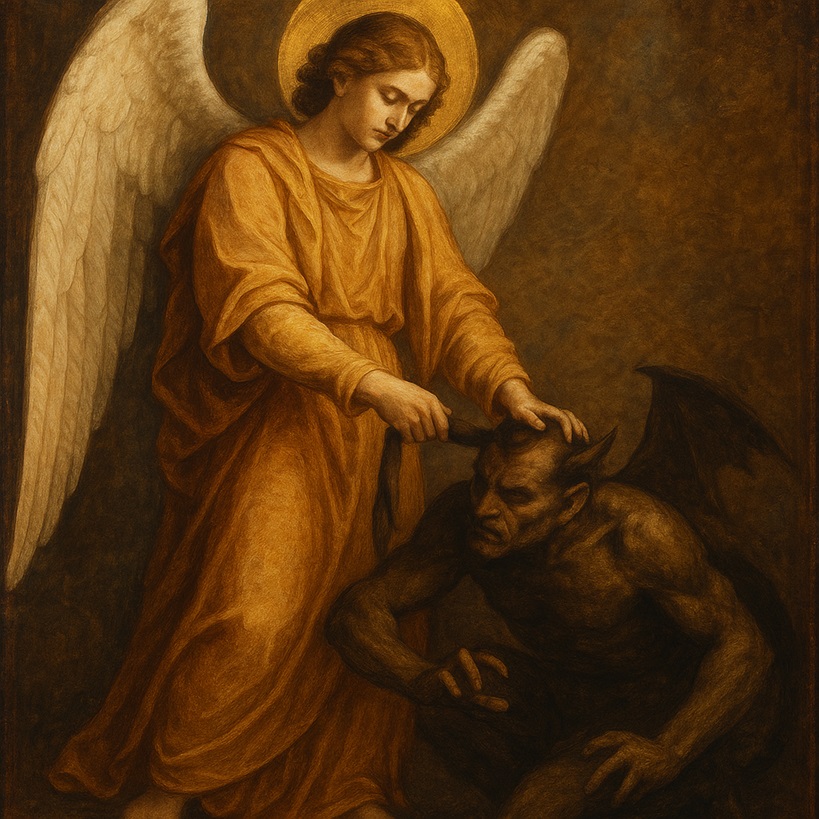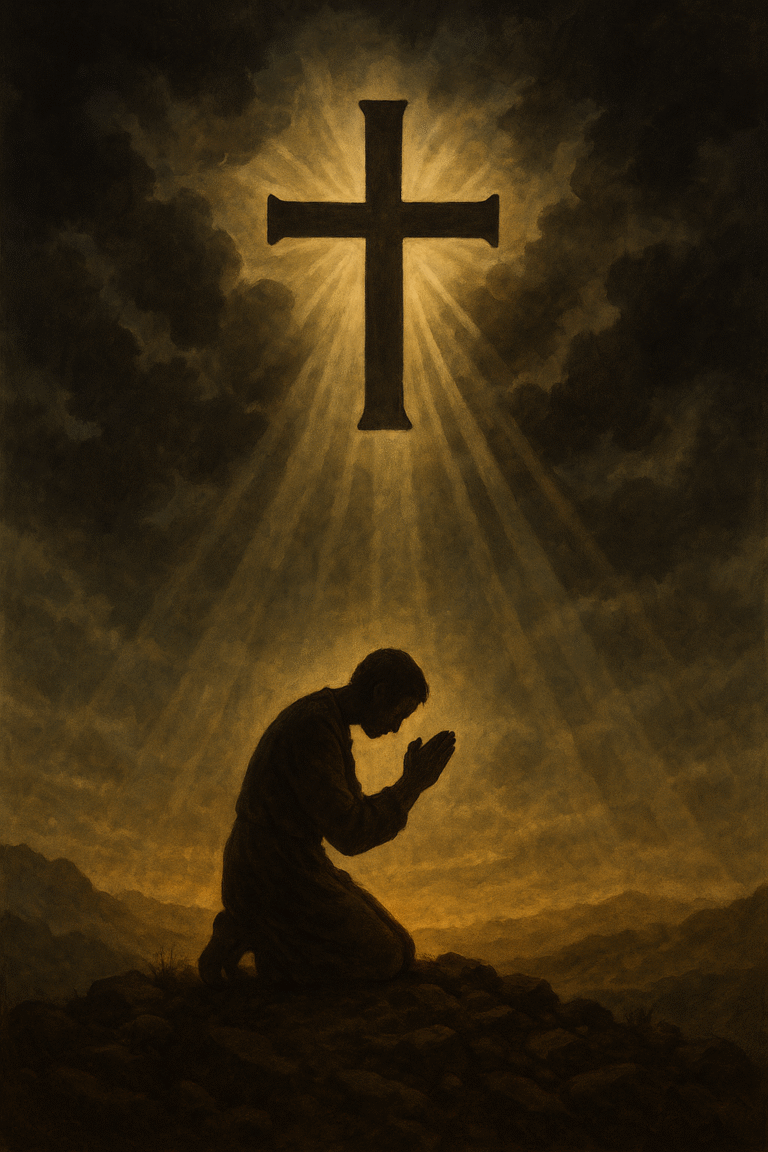
“For the mystery of lawlessness is already at work; only he who now restrains will do so until he is out of the way.” (2 Thessalonians 2:7, ESV)
This verse is often cited in discussions about the end times. Pre-Tribulation proponents frequently point to it as proof that the Church will be removed before the Tribulation, yet a closer look at both the historical context and the text itself shows that the passage is far more ambiguous than that.
Historical Interpretations
For most of church history, the “restrainer” was never interpreted as the Church or the Holy Spirit disappearing from the world. Early writers such as Tertullian, Chrysostom, and Augustine understood the restrainer to be the Roman Empire. Its laws, military power, and social order restrained chaos and the full expression of evil. The idea was straightforward: when the Empire weakened or fell, the man of lawlessness could be revealed. In the Middle Ages, interpreters sometimes transferred the concept to the Holy Roman Empire or to the Papacy, seeing organized political or religious structures as forces holding back lawlessness.
During the Reformation, figures like Luther and Calvin debated whether civil authority was the restrainer, but there was general agreement that the restrainer was some tangible power preventing evil from fully breaking out. It was not until the rise of Dispensationalism in the nineteenth and twentieth centuries that interpreters began to identify the restrainer with the Church or the Holy Spirit, framing it as an invisible spiritual force whose removal would allow the Antichrist to appear. For nearly fifteen hundred years, Christians read the passage in terms of observable, real-world forces rather than a secret spiritual disappearance.
Textually-Supported Hypotheses
Several possibilities emerge when one considers the text in its historical context. The Roman Empire provides a visible and tangible restraining force through its military presence, roads, legal structures, and relative order. Paul’s comment that the Thessalonians “already know what is restraining him” fits this interpretation because they could observe it directly. Yet the prophetic descriptions of the Antichrist complicate this view, since he is said to rise with a powerful, global government.
Another plausible option is Michael the Archangel, who restrains spiritual powers in Daniel 10 and 12. This fits the masculine pronoun in Paul’s writing and aligns with the cosmic aspect of lawlessness, though it is less clear how it accounts for the neuter phrasing in 2 Thessalonians 2:7. A third option is God’s providential plan, which restrains lawlessness until the appointed time. This explanation accommodates Paul’s deliberate vagueness and could have been evident to the Thessalonians in their own experience, although it lacks the concreteness of the Roman Empire.
Why It Doesn’t Support Pre-Tribulation
The Pre-Tribulation reading posits that the restrainer is the Church or the Spirit, and that its removal explains why the Antichrist is revealed. Yet the text never mentions the rapture, the Church, or the Spirit explicitly. The Greek phrase genētai ek mesou, translated “taken out of the way,” can mean “stepping aside” or “ceasing to hinder,” not necessarily disappearing from the earth. Moreover, if the restrainer were removed with the Church or the Spirit, salvation during the Tribulation would seem impossible, yet Revelation describes multitudes coming to faith in that period.
Finally, early interpreters never read the passage in this way; for Paul’s audience, the restrainer was something concrete and observable, not a secret spiritual entity removed with the Church. Pre-Tribulation theology reads a later system into the text rather than deriving it directly from Paul’s words.
Conclusion
The identity of the restrainer in 2 Thessalonians 2:7 remains ambiguous. Historically, it was most often understood as a tangible power such as the Roman Empire, though Michael the Archangel or God’s providence are also reasonable possibilities. The modern Pre-Tribulation interpretation, which sees the Church or Spirit as being removed, is a recent innovation that is not supported by the first-century context. The passage reminds readers that God restrains evil according to His timing, and that Paul’s original audience would have recognized the restrainer in the world around them, not in a secret rapture event.
Discussion Questions
- What concrete force would the Thessalonians have recognized as restraining lawlessness in their time, and how might this understanding differ from modern interpretations?
- How does the rise of the Antichrist, with his own powerful government, influence interpretations of the restrainer, and does this suggest the restrainer must be a substantial and observable force?
- What role does Paul’s deliberate vagueness play in interpreting the identity of the restrainer, and why might he have chosen not to name it explicitly?
- In what ways does 2 Thessalonians 2:7 align with or differ from Jesus’ teachings in Matthew 24 regarding lawlessness and divine timing?
- How does the historical understanding of the restrainer, as held by early church fathers, challenge or support modern Pre-Tribulation interpretations?
Want to Know More?
- Colin R. Nicholl – From Hope to Despair in Thessalonica: Situating 1 and 2 Thessalonians
This book contains Nicholl’s full scholarly treatment of the “restrainer” in a chapter titled “Michael, the Restrainer Removed.” It is one of the most textually rigorous examinations of 2 Thessalonians 2:6–7 in print. - Charles A. Wanamaker – The Epistles to the Thessalonians (New International Greek Testament Commentary)
This commentary covers the Greek text in depth and includes detailed discussion of the grammatical and historical issues surrounding ho katechōn. - Gordon D. Fee – Pauline Christology: An Exegetical-Theological Study
While broader in scope, this book includes extended discussion of 2 Thessalonians 2, particularly on how the restrainer relates to Paul’s eschatology. - Ben Witherington III – 1 and 2 Thessalonians: A Socio-Rhetorical Commentary
Witherington analyzes the restrainer in the context of Greco-Roman rhetoric, first-century Thessalonica, and theological implications. - Greg Beale – 1–2 Thessalonians (IVP New Testament Commentary Series)
Beale addresses multiple interpretive views of the restrainer, including Pre-Trib, historical, and angelic possibilities, with theological reflection throughout.
Published by InterVarsity Press (2003).




